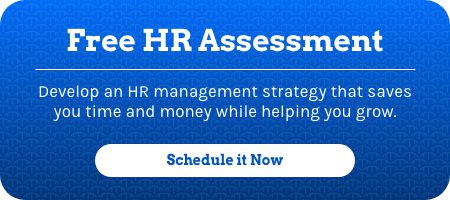From Drew Bledsoe to Tom Brady, David Robinson to Tim Duncan, transferring power from one leader to another can be a seamless and successful process—not just in the sports world, but within the corporate one, too. Succession planning is an intricate process that starts at the recruiting stage, then flows through the rest of the areas in the Talent Management process including onboarding, performance and training. It begins with your, and/or your employer’s ability to identify, nurture, and really, convince the employee talent pool to stay with you as their career skills and aspirations grow greater over time.
If you want to ensure your company is best prepared for when a leader is ready for retirement, or when someone is let go; finding the right person internally to fill the position with confidence comes down to how you’re evaluating talent internally.
Key Areas of Evaluation in Succession Planning
You should be monitoring these four areas of evaluation in succession planning when identifying employee prospects within your company. The costs and hours saved in identifying internal talent, compared to an external search are just a few benefits to enhancing your succession planning process.

Potential
A common mistake many employers’ fall for, when auditing their staff for potential leadership successors, is they think that production equals potential. While production is critical, and a useful indicator to evaluate, it really stems from personality when it comes to being able to confidently place new leaders. According to Hogan Assessments, “A leader on personality assessments for business, defines high potential as ‘the ability to build and lead teams that can consistently outperform the competition.”In order to develop a plan to find employees with high-potential in leadership, you can follow these steps, outlined by Dr. Thomas Chamorro-Premuzic, an international expert in psychological profiling and talent management:
- Establish clear criteria based on achievements and KPIs that define what behaviors equal high-potential
- Use factual and objective methods to appraise performance and be transparent about employee output
- Ensure developmental support for those who try and fail to meet established targets, despite trying – after all, potential can be learned and nurtured
- Don’t focus on past or current performance directly: personality is a better indicator of potential for a new role, especially when it involves the management of others
Readiness
When it comes to evaluating readiness in the succession planning process, the most important thing to determine is if whoever you’re targeting as a future leader believes in the changes coming ahead too. If you have their investment from the get-go, everyone involved in the process will have more time and energy into ensuring investment into succession doesn’t go wasted. To help assess your company for potential leaders, there are automated tools to help in the evaluation of readiness among the staff. You can also partner with internal and external partners to find answers to the following questions to identify if your company is ready to find these leaders:
- How would you rate the level of trust internally?
- Is your work environment positive or negative?
- How would you rate the level of transparency and communication within the organization?
- Do you share any sensitive information out and trust that confidentiality is maintained?
- Does your company offer a culture of enhanced interpersonal relationships that are based on respect, equality and dignity?
- Are your leaders deeply committed to making the changes you need?

Getting the buy-in you need will help you gauge the readiness in employees today who may have the potential to be leaders of your business tomorrow.
Risk of the employee leaving
When evaluating internal talent for potential leadership positions within your company, it’s important that you also gauge the possibility that the employee may have no interest in maintaining a working relationship with you, and they could be a potential flight risk when an opportunity with greener pastures falls into their laps.
Before you go ahead and begin implementing an employee into your succession planning process, you need to do your due diligence in determining if they are also interested in becoming apart of the company’s future. A process can be created by manual and automated workflows to score on if they are a flight risk or not. Evaluators can use data-driven methods from performance reviews, interviews and more. Combined with the data approach, you can pay attention to the psychological side of evaluation and look out for some warning signs including changes in personal appearance, attitude and amount of work being completed for example.
Performance
As we mentioned above, performance should be evaluated, but it shouldn’t be the main basis of who is and who isn’t considered a high-potential employee in your succession planning process. With that said, measuring performance is a great indicator in showing that an employee can put their head down and get work done.
With the help of a performance management tool, you can align company objectives and goals with both employee and manager goals and tasks. KPIs can be attached to objectives to measure if goals are reached. Feedback from performance interviews, team surveys and data acquired can all be used to evaluate if an employee has succession potential.
Maximize Efficiency with Succession Planning Software
Arcoro Succession Planning software is a cloud-based module, giving businesses the ability to accurately review employee performance and readiness with scorecards, comparative ratings and 9-box Talent Matrices. This module can be integrated with various modules, systems, platforms and more within human capital management (HCM) and enterprise relationship planning (ERP) suites.

The module helps to facilitate the sharing and streamlining of data between administrators and leadership to improve reporting, increase transparency and enhance the decision-making process based on evidence.
Key features with Arcoro’s Succession Planning module include:
- Access to a talent dashboard
- Assign tasks, activities and assign feedback partners
- Identify high-potentials at-a-glance
- Access to comprehensive reporting on employee evaluations, courses, 360s, certifications and more
- Succession talent pool or 9Box Matrix
- Career planning
- Display competency performance in green/yellow/red
- Export real-time reports
The cloud-based, full Arcoro HR platform can be offered by partners as the full suite, or by each individual module. These modules are integrated with over 300 partners and are completely scalable to meet the everchanging requirements of your clientele.

See for yourself how our succession planning software works. Schedule a demo today!




